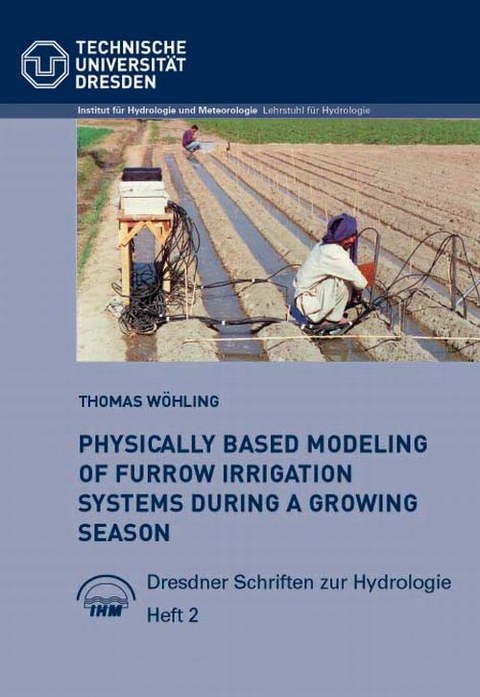Booklet 2
Physically based modeling of furrow irrigation systems during a growing season
by Thomas Wöhling (2005)
Abstract: A seasonal furrow irrigation model (FIM) is presented which comprises process-based simultaneous modeling of the 1D surface flow, the quasi-3D soil water transport, and the crop growth. The surface flow sub-model FAPS utilizes an analytical solution of the Zero-Inertia open-channel flow equations for modeling the non-uniform flow during both the advance and the early storage phase of an irrigation event. Process adequate simplifications are applied for the late storage phase, the depletion and the recession phase. Both the infiltration and the soil water transport are portrayed by a numerical solution of the 2D Richards equation for varying saturated flow (HYDRUS-2). A computational much faster alternative is the semi-analytical transformation model FURINF, which utilizes an analytical solution of the 1D Richards equation. FAPS and HYDRUS-2 are iteratively coupled by the infiltration rate and the flow depth. The set of non-linear partial differential equations for modeling furrow irrigation advance is solved by a space discretization in combination with the Newton iteration method. This new solution brought a fundamental improvement as regards convergence, numerical stability and computational time in comparison to the common solution of the considered problem, namely a time-discretization in combination with the Fixpoint iteration. The new coupled sub-model compares perfectly to data from various laboratory and field irrigation events. For modeling the soil water transport during the whole growing period, HYDRUS-2 and the crop growth sub-model LAI-SIM are coupled by a water-stress index. LAI-SIM includes modules for predicting daily leaf-area index, potential transpiration/evaporation, and root growth. Finally, the framework of the seasonal furrow irrigation system, FIM, is set up by a comprehensive event control and time management unit. A user-friendly graphical user interface supports both the FIM parameterization and the< analysis of simulation results. FIM is validated on data from furrow irrigation experiments on Maize at the CEMAGREF experimental plot in Montpellier, France. Simulated values of the water storage, the soil moisture content, and the yield match very good with the observations. FIM shows a clear superiority over water balance models. It can be applied for improving furrow irrigation design and management, for irrigation planning, for cost-benefit analysis, and for estimation of sustainability for furrow irrigation systems.

